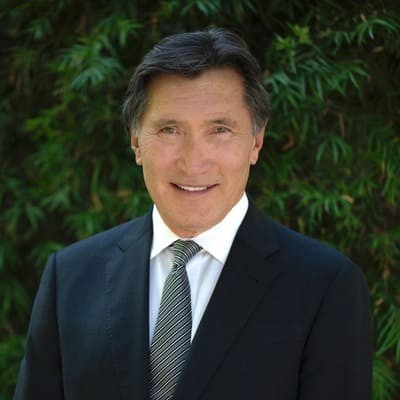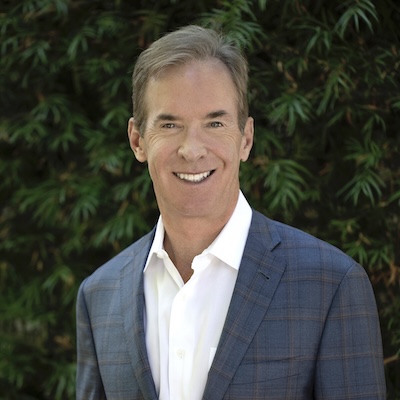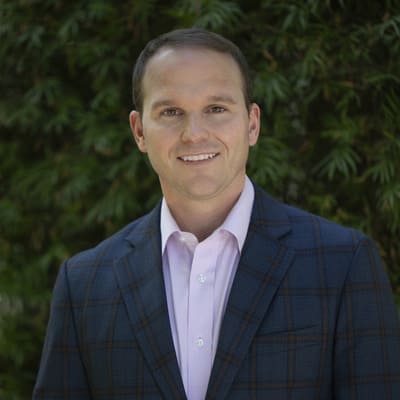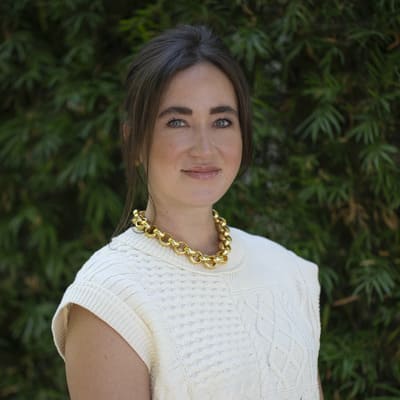A RealSelf Article
Plastic Surgeon William McClure Urges Doctors to Give Back: “Our Profession Is About More Than Personal Gain”
In 2014 RealSelf.com interviewed Dr. McClure and featured the piece on their blog. RealSelf.com is the number one plastic surgery customer review database and the most highly regarded. Read the interview below.
The purpose of a plastic surgeon isn’t all about sculpting the bodies of the wealthy and famous. For many of these doctors, the role comes with a sense of responsibility to give back to those in need, from children abroad born with facial deformities to families right here in America who lack affordable access to medical care.
Facial plastic surgeon Dr. William McClure is one of these doctors. When he’s not busy innovating techniques in his Napa Valley office, he’s giving his time to humanitarian trips in Asia and Central America. He’s served on 70 volunteer missions in 16 different countries, spending six to eight weeks a year performing surgeries on children with birth defects and burn deformities. He’ll continue his work in 2015, traveling to Laos, Vietnam, Guatemala, and Bhutan.
RealSelf caught up with Dr. McClure to learn more about his philanthropic efforts, as well as well hear his advice on how we can make a different right here at home.
RealSelf: What inspired you to start going on medical trips?
Dr. McClure: In medical school I was on track to become a cardiovascular surgeon until I discovered plastic surgery. I found myself drawn to caring for patients requiring reconstructive surgery, especially burn victims and children with congenital deformities. I was asked to join a faculty member on a surgical mission to Mexico where I watched him perform a cleft lip repair. In only 45 minutes he completely changed a child’s life. I was hooked.
Having lived abroad as a child, I had witnessed poverty and seen people suffering from horrible untreated deformities. On that first surgical mission to Mexico, I realized I could do a small part to help alleviate world suffering. After graduating from Stanford University’s plastic surgery residency, I made the decision to establish a practice where I could devote at least six to eight weeks a year to overseas work, and also do volunteer service at home.
RealSelf: What is the most important aspect of your work?
Dr. McClure: In a single word— teaching. One can only do a finite number of operations during international humanitarian work. That’s why, with my limited time abroad, I will only serve on missions sponsored by organizations that emphasize this. We gain tremendous leverage by teaching our hosts to do the operations and by inspiring them to continue training others.
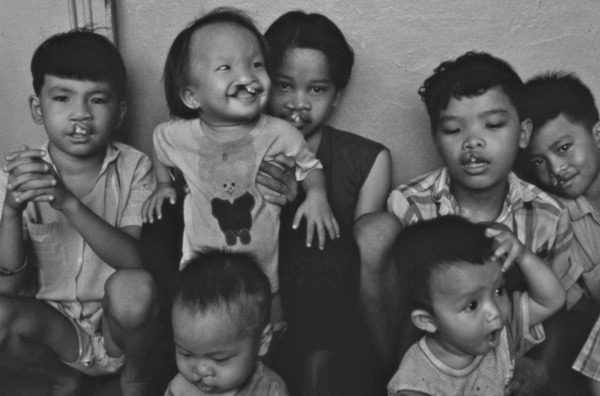
In 2013, I had the pleasure of working with a Vietnamese team from a children’s hospital in Ho Chi Minh City who had joined our ReSurge International team on a joint mission to an underserved provincial hospital in central Vietnam. To my utter delight, the six Vietnamese team members were ones we trained 22 years earlier! We aren’t only teaching surgery. Organizations such as ReSurge International inspire those we serve to use their newly acquired skills to continue serving others less fortunate.
RealSelf: Who’s been your most memorable patient?
Dr. McClure: There have been so many. It seems that each new patient becomes the next “most memorable.” But perhaps the most touching patient was a young man in Laos who had survived a bear attack that left him with a horrendous facial deformity. He lost his nose, upper lip, and portions of his cheeks and lower eyelid. He truly looked like a horror movie monster. Though we could only offer him limited reconstruction, he was so grateful for our attention that he took it upon himself to “join” our team and help with our patients. He would go ahead of us on rounds and remove the dressings of the next patient. He spent the days in the recovery room helping lift and transfer patients. He would help rock the younger patients back to sleep. Despite his frightful appearance, it didn’t take anyone long to see the humanity and compassion hiding behind the hideous mask that was his face. Compassion like this is contagious. Before long none of us — team members, parents, children — noticed the deformity. All we saw was a compassionate, caring, beautiful young man.
Since he lived in a remote area, we had no hope of doing any satisfactory facial reconstruction. However, I was able to make a plaster mold of his face which I brought home to a prosthetist colleague who constructed a mid-face prosthesis. With the help of a local organization, we had the prosthesis delivered to the man in his remote village. I hope to see him on my next trip to Laos.
RealSelf: What do we take for granted in America that you wish others could see through your eyes?
Dr. McClure: In America, one doesn’t see a child, let alone a teenager or adult, with a cleft lip deformity. Because of the resources and excellent training of our plastic surgeons, every child born with a cleft deformity has the lip treated within three months and the palate treated by the first year. This is done for all children despite their families’ economic status. Sadly, this is not the case throughout the developing world where children go untreated. A child with a cleft deformity is shunned. Many are not able to attend school or do meaningful work. They don’t marry or raise children of their own. In some cultures, the family carries guilt for the deformity and feels shamed. Thus the family hides or even abandons the child. A single 45-minute operation can change a child’s life.
Most Americans aren’t aware of the problems these children in developing countries face. However, once they’re exposed to the problems and are shown a way to help, the American people respond very generously.
RealSelf: What’s the message you would give to young doctors about making time for this kind of work?
Dr. McClure: “To whom much is given, much will be required.” We have an obligation to ply our profession for more than personal gain. We embarked on this long and trying road to become physicians because we wanted to help people. It’s easy in our professional lives to get overwhelmed by the oppressive burdens of student loan debt, long work hours, malpractice woes, hospital bureaucracy, rising expenses and low reimbursements, unending paperwork, government regulations, and so on. “Burnout” and early retirement have become endemic in our profession.
The antidote for burnout is volunteer service. This work grounds you and quickly becomes habit forming. As my mentor Dr. Donald Laub, the former chief of Stanford Plastic Surgery and founder of ReSurge International, says, “this work provides us psychic income.” This is the joy in a family’s face upon seeing their child’s life transformed, the excitement of your foreign colleague after you’ve taught them their first difficult reconstructive procedure, and the happiness of the reconstructed patient who’s now able to return to work and care for his family. For me, each trip reinforces why I became a doctor. The volunteer service provides balance to my practice and my life. My everyday concerns diminish when I’m confronted with the horrendous problems our patients in the developing world face — and knowing I can do our small part to help.
RealSelf: How can America help? Where do you see the biggest need and how can average people help to make a big impact?
Dr. McClure: People can make a gigantic impact. Even though the physician and nurse volunteers donate their time and skills, the service and teaching missions require considerable expense. There are many American and international non-profit organizations that sponsor these missions. I’ve worked with about a dozen. I’ve been most impressed with ReSurge International, one of the first organizations that specifically addressed reconstructive surgery needs in the developing world. They’ve taken the forefront in calling attention to the epidemic of burn injuries, and have generously shared their organizational skills and fundraising techniques with newer non-profits. Of the many fine charitable organizations we are asked to support, I’ve found that those such as ReSurge provide a gigantic “bang” for each donated “buck.” I’ve listed the websites of a few of the organizations with whom I’ve volunteered my services. They are all worthy of our financial support.
ReSurge International
Plasticos Foundation
Village Health Works
Rotaplast
Lao Rehabilitation Foundation
Hospital de la Familia Foundation
Interplast Germany
Recent Blogs
Natural-Looking Results with a Napa CA Plastic Surgeon: Achieve Your Aesthetic Goals
In today’s aesthetic world, less is more—and the most sought-after outcomes are the ones that don’t look “done” at all. Patients are no longer asking for drastic changes; they’re seeking subtle, refined enhancements that align with their features and reflect their...
Lipo Surgery: Beyond the Myths – Unveiling the Facts About Body Sculpting
If you’ve ever considered refining your shape with liposuction, you’re not alone. Lipo surgery remains one of the most popular body contouring procedures in the United States—and for good reason. It’s safe, effective, and produces lasting results when performed by a...
What is Plastic Surgery? Unveiling the World of Reconstruction and Enhancement
When most people think of plastic surgery, their minds jump straight to cosmetic enhancements—facelifts, tummy tucks, and Botox. While those procedures are a key part of the field, they only scratch the surface. At Napa Solano Plastic Surgery, we believe that...
Cosmetic Surgery vs. Non-Surgical Enhancements: Unveiling the Best Option
Today’s aesthetic options have never been more versatile—or more personalized. Whether you're looking to reverse signs of aging, refine facial features, or enhance body contours, you now have more choices than ever to achieve your goals. At Napa Solano Plastic...
Renew Your Look in Wine Country: Napa Plastic Surgery Options
Nestled in the heart of the breathtaking Napa Valley, Napa Solano Plastic Surgery offers a unique combination of luxury, expertise, and transformative results. Whether you’re a local resident or visiting the area to savor its world-renowned wine and scenery, you’ll...

